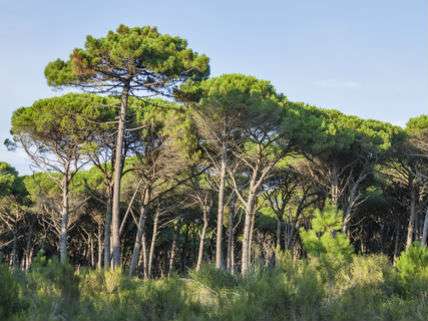Earth's Forest Area 9 Percent Greater Than Thought
Satellite survey finds hidden forests all over the world.

Forests in drylands are much more extensive than previously reported and cover a total area similar to that of tropical rainforests or boreal forests, according to a new study published in Science. Researchers discovered these hidden forests by scrutinizing high resolution satellite images covering more than 200,000 half-hectare-sized plots. The survey used ultra–high-resolution Google Earth images with each pixel representing a patch of ground less than a meter wide.
"We show that in 2015, 1327 million hectares of drylands had more than 10% tree-cover, and 1079 million hectares comprised forest," report the researchers. "Our estimate is 40 to 47% higher than previous estimates, corresponding to 467 million hectares of forest that have never been reported before. This increases current estimates of global forest cover by at least 9%."
To the extent that greater forest area helps mitigate environmental problems—soil erosion, declines in biodiversity, water retention issues—this adds to the good news that global deforestation rates are slowing. As the Food and Agricultural Organization reported two years ago: Over the past 25 years forest area has changed from 4.1 billion ha to just under 4 billion ha, a decrease of 3.1 percent. the rate of global forest area change has slowed by more than 50 percent between 1990 and 2015.
If Jesse Ausubel, head of the Human Environment Program at Rockefeller University, is right, humanity is on the cusp of peak farmland with the result that global forest cover could well expand by nearly 400 million hectares by 2060, an area nearly double the size of the United States east of the Mississippi River.


Show Comments (22)